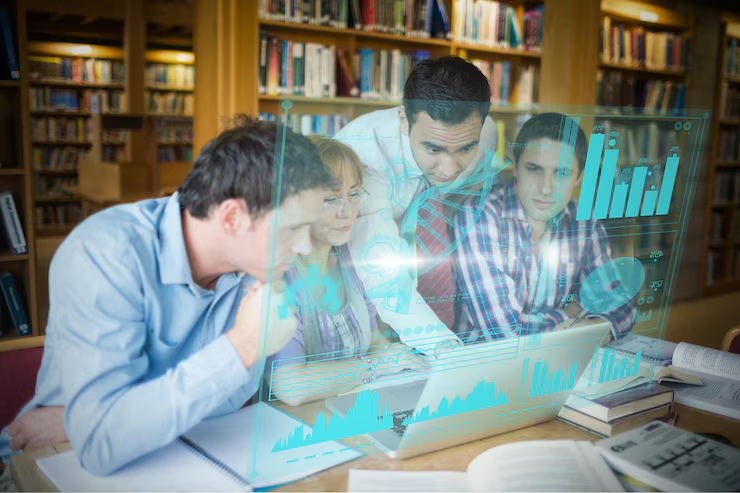Visual Perception News is changing the way we understand how we see the world around us. From groundbreaking research to everyday applications, the field is rapidly evolving. As scientists continue to explore the mysteries of the brain, we are discovering more about how we interpret colors, shapes, and even movement. These discoveries impact everything from education to technology, making it an exciting time for anyone interested in the science of sight.
In this post, we’ll dive into the latest visual perception news, unpacking recent studies and findings that reveal how our brains process visual information. Whether you’re a student, a teacher, or just curious about how we see the world, these insights will help you understand the fascinating journey of light into our eyes and mind.
What is Visual Perception? A Simple Guide to Understanding the Science
Visual perception is how we interpret what we see. It’s the process that allows us to understand shapes, colors, distances, and movement. Our brain takes the light that enters our eyes and makes sense of it. It’s like looking at a picture and understanding what it represents. Without visual perception, we wouldn’t be able to recognize objects or read words.
Our eyes collect the light, and the brain decodes it. This helps us understand the world around us. For example, when you look at a red apple, your eyes notice the color, and your brain tells you it’s an apple. Visual perception is very important because it affects how we interact with everything around us.
Recent studies in visual perception news have shown that how we see things can be affected by many factors. This includes things like our age, health, and even the technology we use. New technology, like virtual reality, is also changing the way we understand how visual perception works.
Understanding visual perception helps improve how we teach, learn, and even build new technologies. The more we know, the better we can design better tools, like glasses or apps, to help people see more clearly.
The Latest Visual Perception News: Key Studies You Should Know About
There are many new studies in the field of visual perception. These studies are helping scientists learn more about how we see. One of the exciting visual perception news stories is about how our brains adjust to new experiences. Research has shown that the brain can change how it sees things over time. For example, when we start wearing glasses or contact lenses, our brain learns to process the new way we see the world.
A recent study also found that our brains can trick us into seeing things that aren’t there. This is called an optical illusion. It happens because our brain fills in the gaps when it doesn’t fully understand what we see. Optical illusions are a great way to study how visual perception works, and scientists are using them to learn more about how our brains process information.
Scientists are also learning how visual perception news impacts people with disabilities. For example, new research is helping doctors design better tools for people who are blind or have low vision. This shows how visual perception studies are not only interesting but can also help improve lives.
Finally, visual perception news is also exploring how technology like artificial intelligence (AI) can be used to improve how we see. AI is helping create devices that can help people with visual impairments by reading text or recognizing faces.
How Visual Perception News is Changing Our Understanding of Sight

Understanding sight is more than just knowing how our eyes work. It’s about how our brain makes sense of everything we see. The latest visual perception news is showing how our brains are not just passive receivers of information. Instead, they actively process and interpret what we see.
One groundbreaking discovery is how sight is connected to our emotions. Scientists are finding that the way we see something can affect how we feel. For example, bright colors might make us feel happy, while darker colors might make us feel sad. This is important because it shows that what we see isn’t just about vision but also about our feelings.
Recent studies also show that sight is connected to memory. What we see can help us remember things better. The more we understand about these connections, the better we can improve learning and even memory treatments.
How Visual Perception Studies Are Shaping the Future of Technology
As visual perception news grows, it’s becoming clear that understanding how we see is changing technology. This means that our gadgets and tools will work better and help us see the world in new ways. The way we interact with our phones, computers, and even virtual reality (VR) is directly connected to visual perception.
Visual Perception’s Role in Augmented Reality (AR) and Virtual Reality (VR)
- Making images clearer: New studies are helping improve how images appear in AR and VR.
- Helping users adapt: Visual perception research is helping design VR environments that don’t confuse the brain.
- Enhancing experiences: Understanding how our eyes and brains work together is improving virtual worlds.
AR and VR are great examples of how understanding visual perception can create experiences that feel real. By knowing how our eyes work, developers can create more realistic experiences that make us feel like we are actually in the world they design.
How New Visual Perception Studies Are Shaping the Future of Education
Visual perception affects how we learn and understand new information. In schools, teachers use visual aids like charts, pictures, and videos to help students learn. By understanding how people see, teachers can make learning easier and more fun. Visual perception news is showing us new ways to help students learn better.
Improving Learning with Visual Tools
- Using colors to teach: Studies show that colors can help students focus and remember.
- Designing better classrooms: Understanding how we see helps create classrooms that are easier to navigate.
- Technology for learning: Devices that assist students with vision problems are becoming more common.
The future of education is brighter thanks to visual perception studies. By designing better tools and learning spaces, we can make sure all students have a better chance to succeed. Teachers are using new findings to help students who might struggle with learning or seeing clearly.
The Role of Visual Perception in Daily Life: Why It Matters More Than You Think
Visual perception is essential in our everyday activities. Whether we’re driving, reading, or even just walking, we rely on our ability to see and understand visual information. Without it, simple tasks would become incredibly challenging. Recent visual perception news shows that our brain is constantly processing visual data, helping us make decisions quickly and safely.
How Visual Perception Helps Us Stay Safe
- Navigating busy streets: We use our vision to avoid obstacles and cross roads safely.
- Recognizing faces: Our brains are wired to quickly recognize familiar faces, which helps in social interactions.
- Reading signs and signals: Visual perception helps us understand traffic signs and warnings to stay safe.
Each of these actions shows how important visual perception is in our day-to-day life. By understanding it better, we can improve our safety and make life easier.
Visual Perception News and Education: Helping Students See Better

In schools, visual perception plays a key role in how students learn. Teachers are now using the latest visual perception news to help students who might struggle with reading or paying attention in class. By understanding how children see, educators can tailor lessons to be more effective and engaging.
How Visual Perception Affects Learning
- Reading difficulties: Understanding how the brain processes text can help teachers support struggling readers.
- Improved classroom setups: Schools are changing layouts to help students focus better by considering how they perceive space.
- Assistive technology: New tools that help students with visual impairments are becoming more common in classrooms.
Visual perception research is transforming how we approach education, helping children learn better and easier. By using this knowledge, educators can make learning more inclusive for everyone.
Conclusion
In conclusion, visual perception is a fascinating field that helps us understand how we see and interpret the world around us. It plays a big role in how we interact with everything, from everyday activities to new technologies. By keeping up with the latest visual perception news, we can learn more about how our eyes and brains work together, which can improve our daily lives and even help people with vision problems.
As science and technology continue to grow, the future of visual perception is becoming even more exciting. New discoveries are being made all the time, and these breakthroughs can make the world a better place for everyone. Whether you’re interested in education, technology, or health, understanding visual perception helps us appreciate the power of sight and how it shapes our experiences.
FAQs
Q: What is visual perception?
A: Visual perception is the way our brain understands and interprets what we see. It helps us recognize colors, shapes, and objects, allowing us to understand the world around us.
Q: How does visual perception affect our daily life?
A: Visual perception helps us with everyday tasks, like reading, walking, and driving. Without it, we would find it difficult to do even simple things.
Q: Can visual perception be improved?
A: Yes, certain exercises, tools, and therapies can help improve visual perception, especially for those with vision problems or disabilities.
Q: What are some new advancements in visual perception?
A: Some recent advancements include better technologies for people with vision impairments and new research on how AI is improving visual perception in healthcare.
Q: How does visual perception impact learning?
A: Visual perception plays a big role in how we learn. It helps us recognize letters, understand charts, and pay attention in class, making it easier to absorb information.